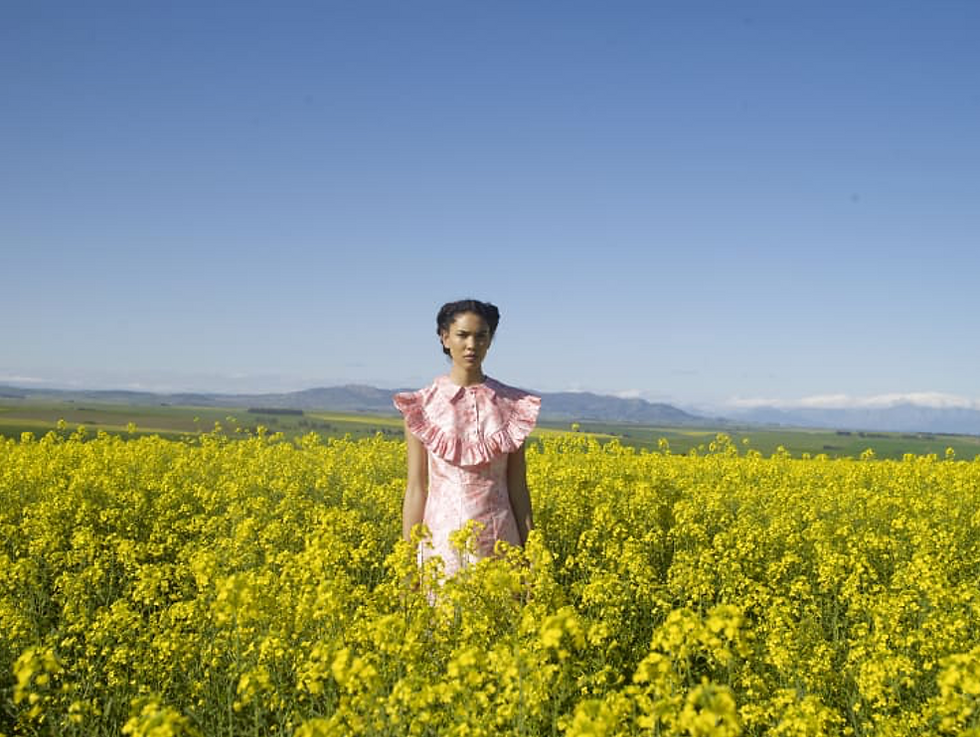(Fashion for one) Fashion for all
- Cecilia Arroyo
- Jun 5, 2021
- 3 min read
What happens to fashion when radical changes happen in society, health, and the economy? New representations, new faces, bodies, and ages show us that fashion can be richer and diverse.
The world is undergoing a radical transformation. Covid-19 crisis signified changes in not only health care and prevention, but also in every sphere of social life, creating times of strife, struggle, and opportunities. A humanitarian, economic, and health crisis brought as well the amplification of social inequality and need for more sustainable practices. Being embedded in society and culture, the fashion industry is no stranger to these issues and had to adapt throughout the months of 2020 to different obstacles and changes in organization, social impact, and business tactics. As a result, an array of diverse people bloomed from catwalks, campaigns, and catalogs, showing us that fashion-forward may actually be moving in the right direction.
Milan Fashion Week
Italy was severely impacted by the Covid-19 pandemic and despite the uncertainties, the fashion calendar arrived like a breath of fresh air and change that was needed in the Italian city after the first pandemic wave. Business of Fashion’ writer Angelo Flaccavento (2020) starts a report on this event with the words of the creative director of Marni “it was not about fashion but about the message”, but it is possible to take another point of view and explain that perhaps now, fashion is about the message.
The author titled the article “Reality Has a Starring Role at Milan Fashion Week”, explaining that designers felt more grounded in reality and did not use fashion as escapism and bubble separated from reality. However, he explains collections such as Versace’s pointing out that the designers stuck to their respective formulas, not acknowledging that it was the very first time that Versace had plus-size models in their catwalk.

(Picture: Versace, 2020).
The Business of Fashion author ends the article by re-stating that fashion was not the main current in Milan Fashion Week, but it was about fashion meeting the reality. This can be true to some extent if we only focus on the heavily acknowledged designers and familiar faces of Milan’s fashion, but this year it was more than that. As reported by Palumbo (2020) for CNN, Milan gave space to designers Sindiso Khumalo from South Africa, Shuting Qiu from China, and Ji Won Choi from Seoul to appear in the official calendar. These new faces show us that fashion is not only about heritage and renowned names, but also about new and fresh ideas, ethnicities, history, and faces. They showed us that reality has been a part of fashion even before 2020 Milan Fashion Week.

(Picture: Palumbo, 2020).
Gucci L’Obscur campaign
The Italian luxury label is making a big statement in their new beauty campaign by being body positive and inclusive in an industry that is generally known for the opposite. Gucci’s Instagram is now bursting with people of different ethnicities, ages, and abilities, and in the midst of all the diversity, one of the most liked pictures is the one of the model Ellie Goldstein, a British 18-year-old model with Down’s syndrome. As Tish Weinstock reported for Vogue in July 2020, Ellie was now a breakout star by starring on Gucci’s L’obscur campaign, and the attention landed her a partnership with Vogue Italia.

(Picture: Gucci, n.d.).
The stardom propelled by the beauty campaign brought Ellie to the center of a conversation surrounding the accessibility of fashion and was met with overwhelming support. However, this was not the case with all the models of the L’obscur campaign. The Guardian’s article written by Nicole Mowbray earlier this year explains the mixed reception of the early campaign pictures of the unconventional-looking model and musician Dani Miller. Social media users received the pictures of Miller with degrading comments and disapproving of her appearance, especially her missing lateral incisors. The negative comments were also met by people that were conflicted by the bullying and as Mowbray wrote: People ask for normal bodies in fashion, and then complain when they see them. Miller and the creative director of Gucci explained that nowadays there is space for everyone even in the beauty and fashion world.

(Picture: Mowbray, 2020.).
Fashion seems to be opening up to other experiences and giving a platform to more than just the mainstream models that everyone recognizes. This opens the doors not only for talented people in the fashion business but to younger generations to see themselves represented in fashion media. I hope that his movement only continues to grow and help disarm past barriers and walls, giving space to a brighter, colorful, and charming side of fashion that we are beginning to know.



Comments